AutoElectric VehiclesLiving with an EV – 5 learnings about chargingAfter running an electric vehicle for six months, here’s what I learnt about the charging processWhen you purchase through links on our site, we may earn an affiliate commission.Here’s how it works.
AutoElectric VehiclesLiving with an EV – 5 learnings about chargingAfter running an electric vehicle for six months, here’s what I learnt about the charging processWhen you purchase through links on our site, we may earn an affiliate commission.Here’s how it works.
After running an electric vehicle for six months, here’s what I learnt about the charging process
When you purchase through links on our site, we may earn an affiliate commission.Here’s how it works.
(Image credit: Skoda)
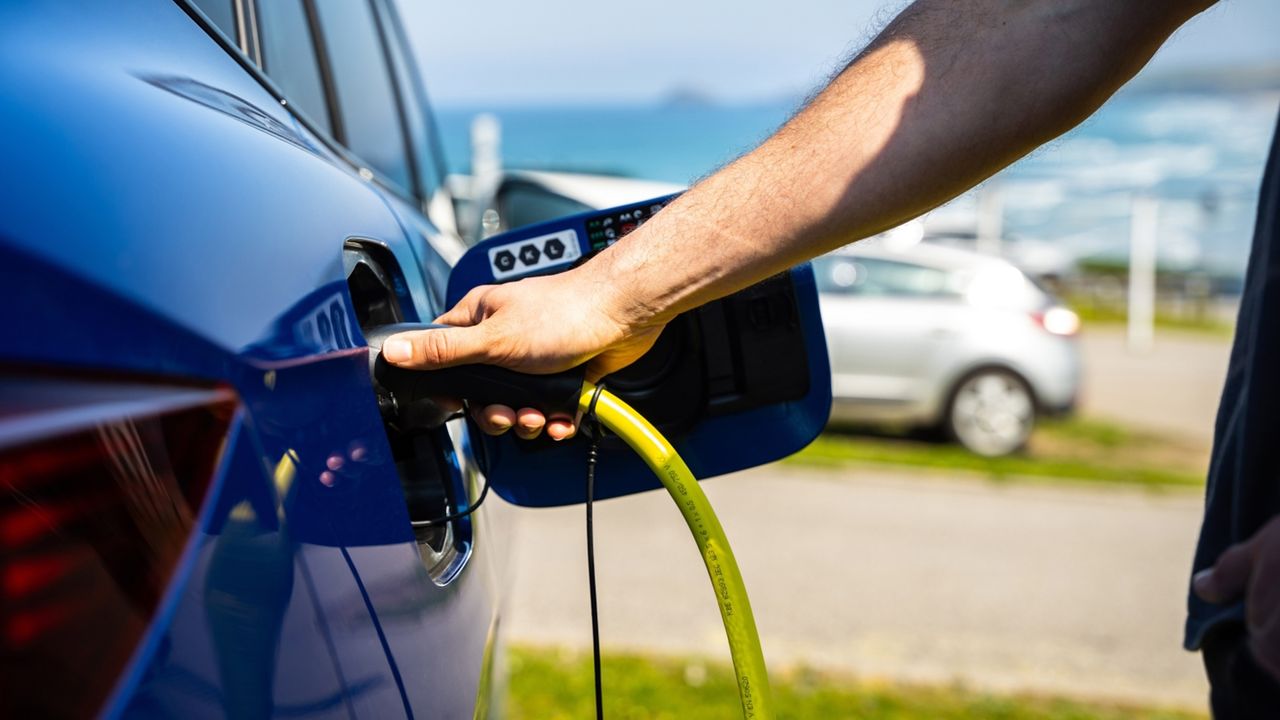
(Image credit: Skoda)
As a newcomer to theelectric vehiclescene, I’ve now had the opportunity to live with theSkoda Enyaqfor six months. Used for everything from daily errands to fully loaded family weekends away to the countryside, it’s been a learning curve, particularly the charging side of things.
There was a lot to take in at first – downloading a plethora of public charging dock apps, and being a little anxious about always having the battery charged up. After only a few weeks though, I was in the swing of it, and it was all pretty plain sailing.
At the beginning of my EV journey, I assumed the more limited range and charging experience would be somewhat troublesome and hinder family life. However, on the contrary; the smoother driving experience was most welcome, the range never proved an issue and charging was a breeze. When it came to handing the keys back and stepping back into my old VW Golf, it was a sad moment, we were all fans of the Skoda Enyaq.
Here are some of my key takeaways from living with an EV.
(Image credit: Fergus Scholls)
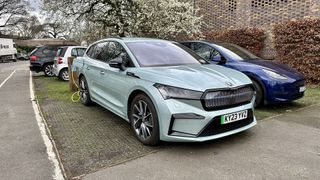
(Image credit: Fergus Scholls)
1. Charger types and speeds
When I first started making notes for this article in December 2023, there were 53,906 charging stations across the UK. Fast forward three months andstats availablefor the end of March show this figure to be 59,590. So in just three months, there’s been an impressive 10% boost in the network – the landscape for EV owners improves with every week that passes.
Each of these EV chargers belongs to a network. There’s dozens of them, with the bigger ones including BP Pulse, Shell Recharge, and Source London. The speeds of charge on offer vary, as do the costs, and although initially it feels a bit of a puzzle, before long you’ll whittle them down to the handful which are most convenient and best suit your needs.
While clocking up over 3,500 miles with the Skoda Enyaq, a local ‘Fast’ charger fromBeliev, offering a charging speed of up to 22kW, ended up being my most regular go-to choice. Nearly always available (although I avoided Fridays, as they’d tend to be busier), it was very convenient and the sweet spot of charging pretty quickly – around four hours would be sufficient – and not being as costly as the faster alternatives.
Sign up to the T3 newsletter for smarter living straight to your inbox
Get all the latest news, reviews, deals and buying guides on gorgeous tech, home and active products from the T3 experts
Here is a summary of the four categories EV car chargers fall into:
(Image credit: Skoda)
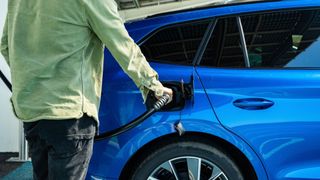
(Image credit: Skoda)
2. Charging costs
Making the adjustment from price per litre to price per kWh (the unit of measure for electricity), you’ll quickly get a handle on what rates are associated with particular types and brands of chargers. The predominant factor in determining price is the speed of charge being offered – slow is cheap and fast is expensive.
The price varies wildly, from as little as 7.5p for EV home charging specific tariffs (such asOctopus Energy) which capitalise on especially low off-peak rates. At the other end of the spectrum are the likes ofInstavolt’sUltra-rapid roadside chargers (often at motorway service stations) at 85p/kWh. Given these ultra-rapid chargers are so expensive, making them more costly per mile than refuelling a regular petrol-engine car, these are best used only when necessary for charging mid-journey.
So the week-in-week-out choice for those who don’t have at-home charging will probably be the slow/fast category of chargers. With an average price of 56p/kWh (as of March 2024), this means filling up the Skoda Enyaq’s 77kWh battery would cost £43. Over the 3,500 miles I covered, the long-term average was 2.9kWh per mile, so this full charge would give me a range of around 220 miles with real-world driving over the cooler months of the year.
Interesting to note that the claimed WLTP range of the Enyaq is 329 miles. This level of reduction from advertised to real-world seems quite typical across all EV brands' claimed numbers depending on your driving style, weather and average speeds.
So rapid or ultra-rapid chargers certainly work out more costly than running my VW Golf. But unless you’ll regularly be doing journeys of over 200 miles (requiring charging on the go) you’re likely to experience the average charging cost of 56p/kWh which is comparable to ICE cars. However, the clear winner is charging at home. At 7.5p/kWh, the Skoda would cost £5.80 to fill up (compared to £65 with the costly ultra rapid chargers).
(Image credit: Fergus Scholls)
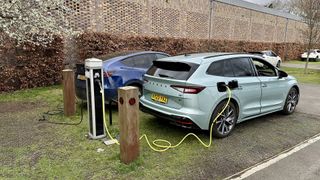
(Image credit: Fergus Scholls)
3. Charging networks and apps
If you’re using public chargers, you’ll probably download the corresponding supplier’s app – they each have their own – to charge and make payment. Initially a bit tedious, once set up with the handful of suppliers you frequent, it’s then all pretty plain sailing, only taking a minute from parking up to charging.
Going down the pay-as-you-go route is initially the simplest way, but if you end up using a particular provider’s charger more than a handful of times, it’s worth considering their monthly subscription to unlock reduced charging rates. The discounts do vary.Believfor instance, offers a measly saving of 3p/kWh saving, so the £5 / month charge is barely worth it. But there are many good ones, includingBP Pulsewith a £7.85 / month subscription fee, pricing is around 20% cheaper (on ultra-fast 150kW+ chargers) at 69p/kWh vs 83p/kWh on pay-as-you-go pricing.
There are also apps which allow you to charge and pay across multiple different suppliers. For instance,Skoda Powerpassis a single app or card which gives instant access to over 500,000 chargers across Europe. It can be used for free on a pay-as-you-charge basis (you’ll receive the supplier’s standard charging tariffs) or the £13.99 / month subscription gives highly preferential rates. For instance, if you can useIONITY’sultra-rapid charges, this monthly cost is likely to be covered in the savings made from a single charge.
(Image credit: Skoda)
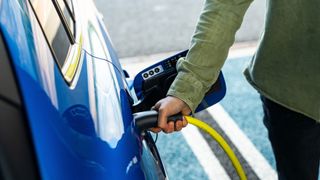
(Image credit: Skoda)
4. Charging etiquette
WithBelievfor example, if your car completes its charge in peak hours (between 9.30am and 6.30pm) you will be charged 8p/minute. With some providers, mostly the ultra-rapid chargers, this can be as much as £1/minute, so it’s certainly worth keeping an eye on.
Rather usefully though, during overnight off-peak hours, many providers won’t charge these idling fees. So if your car completes its charge anytime after 6.30pm, you don’t need to move it until 9.30am the next morning.
(Image credit: Fergus Scholls)
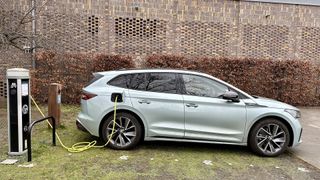
(Image credit: Fergus Scholls)
5. Battery life
With fewer moving parts, the good news is that EVs tend to require less maintenance than Internal Combustion Engine equivalents. The biggest single consideration is the battery, and with lithium-ion battery tech now advanced, they are very robust. The general consensus is they will last 10-20 years or 500,000 miles. So if you have a newer car, you’re unlikely to run into any issues.
There are some good practice guidelines to try to stick to that will help prolong the battery’s life, and ensure capacity stays as high for as long as possible. It is widely acknowledged to keep regular use between the 20 - 80% charged range. Going below this – known as a deep discharge – or going higher than this can harm its longevity and reduce the range if done time and time again. You can of course charge to 100%, but this is best done infrequently and when the car’s full range is needed, for instance, a long journey of over 200 miles.
There is some peace of mind in the form of warranties, which all manufacturers will offer. For instance,Skodaoffers 8 years or 100,000 miles on the battery, and if the capacity drops below 70%, it will be repaired or replaced.
Another care tip: should you need to store your EV for an extended period, consider partially charging the battery to around 50% capacity before storage. Prolonged storage at full charge or very low charge levels can increase the risk of battery degradation.
Some research shows that always using faster DC charging degrades the battery faster than AC charging. However, the effect is believed to be very minor, so it’s not one to worry about too much.

Sky Stream gets a great new trick that unlocks long hidden potentialA Sky Stream puck update gives you a host of new channels
A Sky Stream puck update gives you a host of new channels

If you ever needed proof that cassette players are back, this is itWe Are Rewind has made a portable tape deck so retro it should appear from nowhere in a DeLorean
We Are Rewind has made a portable tape deck so retro it should appear from nowhere in a DeLorean

Christmas car gifts for auto addictsFind the perfect present for those who know their Porsche from their Pagani and their 800 volts from their V8
Find the perfect present for those who know their Porsche from their Pagani and their 800 volts from their V8

Mercedes’ new all-electric CLA coupe is mountains ahead of the competitionThe upcoming next-generation Mercedes EV is a step-change in efficiency and charging
The upcoming next-generation Mercedes EV is a step-change in efficiency and charging

This is my favourite classic car EV conversion yetMazda MX-5 goes electric! But not in the way you’d think…
Mazda MX-5 goes electric! But not in the way you’d think…
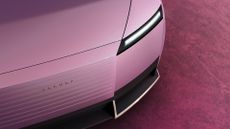
You’ve seen the rebrand, now here’s the first new Jaguar EVThe Type 00 concept previews Jaguar’s all-new electric line-up. We speak to the creatives behind it
The Type 00 concept previews Jaguar’s all-new electric line-up. We speak to the creatives behind it
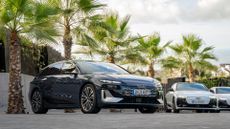
Audi A6 e-tron: your up-market EV estate has landedThe Audi A6 saloon and Avant estate – plus sportier S6 versions of both – deliver futuristic looks and promise huge range.
The Audi A6 saloon and Avant estate – plus sportier S6 versions of both – deliver futuristic looks and promise huge range.

Here’s your best look yet at the first-ever electric Range RoverThe new Range Rover EV creates a tricky game of spot-the-difference
The new Range Rover EV creates a tricky game of spot-the-difference
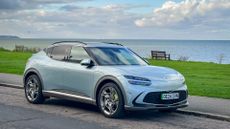
When it comes to EVs, buttons are better than touchscreens – and this car proves itLiving with a Genesis GV60 proves how buttons are best
Living with a Genesis GV60 proves how buttons are best
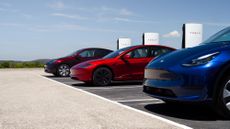
This new Supercharger is great news for some Tesla ownersTesla’s new V4 Supercharger can deliver range at 1,300 miles per hour
Tesla’s new V4 Supercharger can deliver range at 1,300 miles per hour